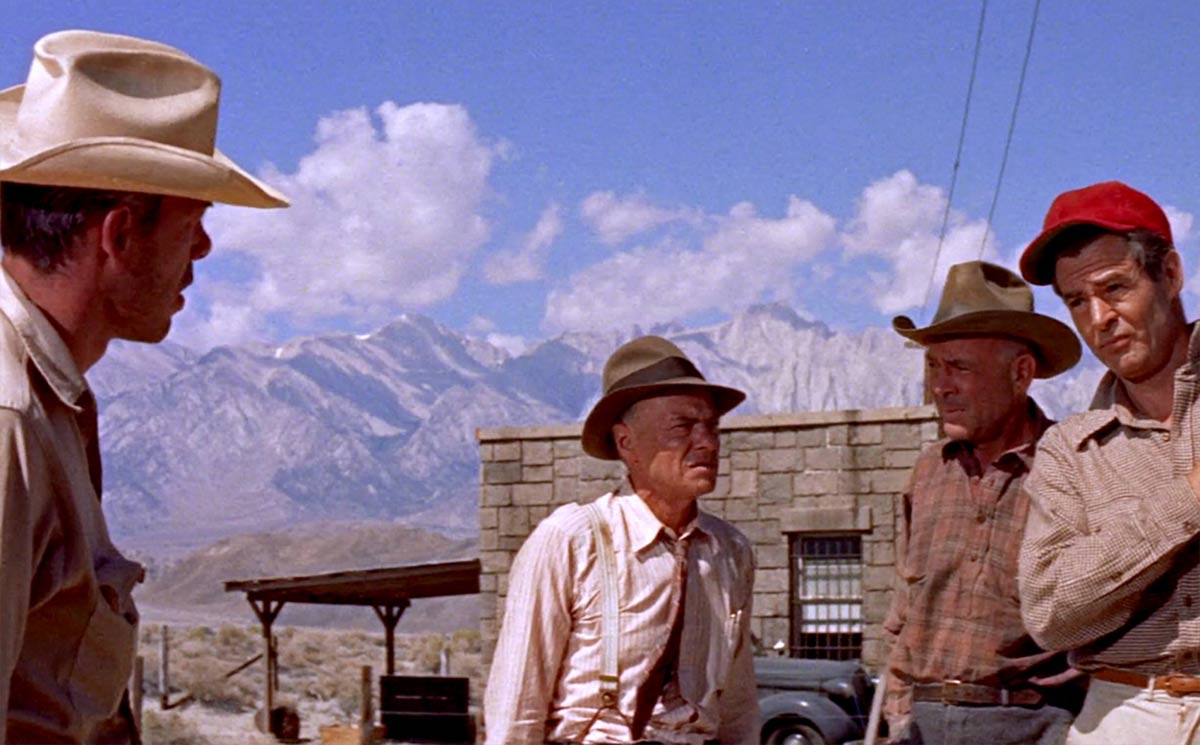“And the truth shall set you free.”
This is one of the core themes of the movies, the belief that the restoration of order can only occur once truth confronts power. While Hollywood has proselytized this notion throughout its history, it was probably never more necessary to it than it was in the decade following World War II.
By any standard, 1948 was Hollywood’s worst year. Not in terms of the movies it put out, but in the way that it was mortally buffeted on all sides by forces outside its control. The Supreme Court ordered the studios to divest themselves of their theater chains thereby ringing the system’s financial death knell. Television made free amusement suddenly available while the advent of night baseball gave city dwellers another place to spend their entertainment dollars.
In the midst of all this, Hollywood was also suffering from the first wave of the communist witch hunts. J. Parnell Thomas and his House Committee on UnAmerican Activities had already rounded up ten writers and directors – the founding fathers of film noir – and smashed their careers for daring to create films that did not make the U.S. look like a paradise of capitalist perfection.
The conundrum for Hollywood was both clear and deadly. On the one hand, they were under attack and in need of defense; on the other, the communist paranoia that had swept the nation meant that any defense would put them on the wrong side of a huge percentage of their audience. Their first response, to make a series of anti-communist thrillers, failed miserably when the resulting films were little more than tedious fifth-rate propaganda. Unsure of their next step, the studios decided to duck their heads in the sand.
The same was not true of the filmmakers.
Throughout the early fifties, a series of films were released that were thinly veiled metaphors for McCarthyism. Most, like Fred Zinneman’s High Noon and Don Siegel’s Invasion of the Body Snatchers, were independently produced and tackled the issue through existing genres. Ironically, the most powerful one came from MGM, the studio that had been the most conservative of all. Once Louis B. Mayer was deposed in 1951 and replaced with the liberal Dore Schary, things changed radically and the proof is in John Sturges’ Bad Day at Black Rock.
The movie opens with a blast of music and a speeding train whipping across the desert. For the first time in four years, this express stops at Black Rock, a dusty little town literally in the middle of nowhere. Out steps John J. McCreedy (Spencer Tracey), a one-armed stranger on a quest. Without even asking about his goal, the terrified and barbaric townspeople immediately set out to convince him to leave. Or, if he doesn’t, kill him.
This is a story of fear of the other, of a community so suffused by its paranoia that it rushes to hide under the shade of a demagogue. Reno (Robert Ryan) runs this town by manipulating those fears, using invective and brute force to convince everyone that he is their only protection.
McCreedy, it turns out, has not come to Black Rock to expose or accuse anyone. He is on a mission of kindness, one last act before he “retires from the human race.” In making this job impossible, Reno creates the perfect storm for his and his town’s destruction.
Beyond its clear political intent, Bad Day at Black Rock remains an exciting work because it is also a brilliantly constructed suspenser. McCreedy’s quest is as much a mystery to us as it is to the town. When finally revealed, the impact takes the film into a social territory that few other movies of the time would dare.
Stylistically, Bad Day at Black Rock is a potent yet ironic statement. It is a film noir, the very genre that called down the witch hunters. It hides this fact by playing in the bright sunlight, bathed in Technicolor and set inside an expansive wide frame. Visually, it seems to be saying, “Film noir? Me? Never!”
Sturges fills his Cinemascope frame with dazzling low-angle formally staged compositions that would later have a major impact on Sergio Leone’s “Man with No Name” westerns. Beyond this, Sturges borrows liberally from Akira Kurosawa, particularly his classic Rashomon in the way that it questions guilt and its relationship to truth (Sturges would later remake Kurosawa’s Seven Samurai as The Magnificent Seven).
Despite the big name leads, Bad Day at Black Rock is a classic ensemble film. Beyond Tracey and Ryan, the cast is a veritable who’s who of Hollywood’s best character actors, all seizing the opportunities offered. In their first of many cinematic pairings, Lee Marvin and Ernest Borgnine are the two local toughs and self-appointed enforcers of Reno’s will. The old guard is held up by Dean Jagger as the town drunk who also happens to be the sheriff, Russell Collins as the weasel-like stationmaster and, best of all, Walter Brennan as the cynic with a conscience.
Bad Day at Black Rock came out in 1954 just as the McCarthy bubble was about to burst. It’s commentary, though, is more than about its own political moment. It can now be seen as a preachment about the frightening ease with which a populace will turn to a demagogue to solve their problems, even when that man is responsible for them.
More importantly, Bad Day at Black Rock reminds us that the the only sure way to redemption is through a rigorous if painful application of the truth.


